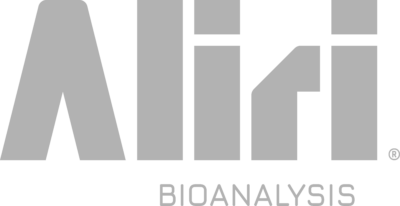Non-Proprietary Assay (NPA) List
Aliri brings more than 30 years of experience in bioanalytical services, developing robust methods to support all stages of drug discovery and development. We offer an extensive list of validated, off-the-shelf assays you can leverage to support a range of research applications. In addition to the hundreds of assays listed below, Aliri also excels at developing customized methods to meet your specific challenges.
Coproporphyrin-I and Coproporphyrin-III
Aliri Bioanalysis presents a newly validated non-proprietary biomarker assay (NPA) for the quantitation of Coproporphyrin I and Coproporphyrin III in human plasma. This assay offers significant advancements in biomarker analysis, applicable across diagnostics, pharmaceutical research, and patient care.
By monitoring these biomarkers, particularly in early clinical development, companies can assess OATP1B1 inhibition, potentially avoiding the need for dedicated clinical drug-drug interaction studies, saving both time and money.
Learn more about the benefits of our NPA for Coproporphyrin I and Coproporphyrin III.
LC/MS/MS VS. LC/HRMS: Identifying and quantifying oligonucleotides
LC/MS/MS and LC/HRMS are formidable instruments employed in mass spectrometry for the identification and quantification of Oligonucleotides (OGNTs). Utilizing these approaches, drug developers can obtain detailed insights into the composition and structure of molecules for biotechnology and pharmaceuticals.
Considerations for choosing the right approach for your drug development project will depend on:
- What instrument you have
- Where you want to go
- How much information you want to collect in a single injection
Discover which technique is best for you.
Optimizing small molecule drug development strategies: A step by step approach to a rugged method
Creating a rugged method for the development of small molecule drugs is crucial in the quest for successful therapies. A systematic approach not only guarantees data consistency and reliability but also empowers you to make well-informed decisions, ultimately boosting project efficiency and success.
To help you navigate the complexities and uncertainties that come with advancing small molecules for drug development, we’ve outlined a robust strategy that includes 7 crucial steps.
Download our fact sheet to learn more.
Personalized therapy selection: Investigation of multiple immune-checkpoints
PD1 blockade has changed the immunotherapy approach against solid tumors – prescribing patients’ monoclonal antibody-based therapy yielded positive results. However, the number of patients that benefited was small compared to expectations, and lack of attention paid to immunohistochemistry could be responsible. Understanding the tumor microenvironment with a single biomarker is not accurate enough to predict the interaction of the drug with the site of action, or to predict the effectiveness of the drug for the patient.
In this application note, industry expert, Corinne Ramos, PhD, discusses how understanding the tumor microenvironment (TME) at the biomarker level is not enough to predict the interaction of the drug with the site of action. Her study performs a deep spatial profiling of biomarkers on two baseline non-small cell lung cancer (NSCLC) tissue samples. The population of gene expression was characterized with a focus on a specific region of interest on the tissue where she could draw conclusions on the TME.
Her research walks through:
- Immune infiltration
- How phenotype correlates with ICI response
- T-cell-inflamed gene-expression profiles
- Immune suppressive pathways that reduce ICI activity
- Tight immune checkpoint targeting.
Learn why the TME needs to be investigated at the molecular level to accurately prescribe the appropriate therapy.
Top 8 Benefits of Mass Spectrometry Imaging Early in Drug Development
Mass spectrometry imaging (MSI) is a groundbreaking technology that provides visuals of complex biological samples to study a drug’s distribution and understand its potential toxicity. MSI can unlock crucial data and give scientists additional insights into drug discovery, diseases, and personalized medicine.
MSI is beneficial in early development and murine models across many therapeutic areas and is especially suited to oncology due to the availability of tissue. With MSI you can:
- Speed up and optimize the drug discovery process
- Visualize drug distribution in tissues and tissue sub-compartments
- Analyze samples for thousands of compounds at once
- Eliminate sensitivity and chemical alteration concerns
- Know whether efficacy is possible based on distribution
- Locate and identify metabolites to understand potential toxicity
- Improve understanding of pharmacokinetics and pharmacodynamics
- Save money and provide a competitive development edge
Download our infographic to learn more about the benefits of mass spectrometry imaging in oncology.
Validating the efficacy of a compound with spatial imaging
With the ever-changing drug development landscape, pharma and biotech companies have the challenging task to quickly and efficiently generate quality and unique data to file an IND. Spatial bioanalysis is a unique solution that can help you achieve this goal, while also enabling strategic and optimized decision making throughout your process.
Download this spatial bioanalysis white paper to gain insights from industry expert, Corinne Ramos, PhD. Discussion points include:
- Precision medicine development and added value
- Disease heterogeneity: Why is it? Why is it important? How do we visualize it?
Target discovery and development of composite biomarkers

